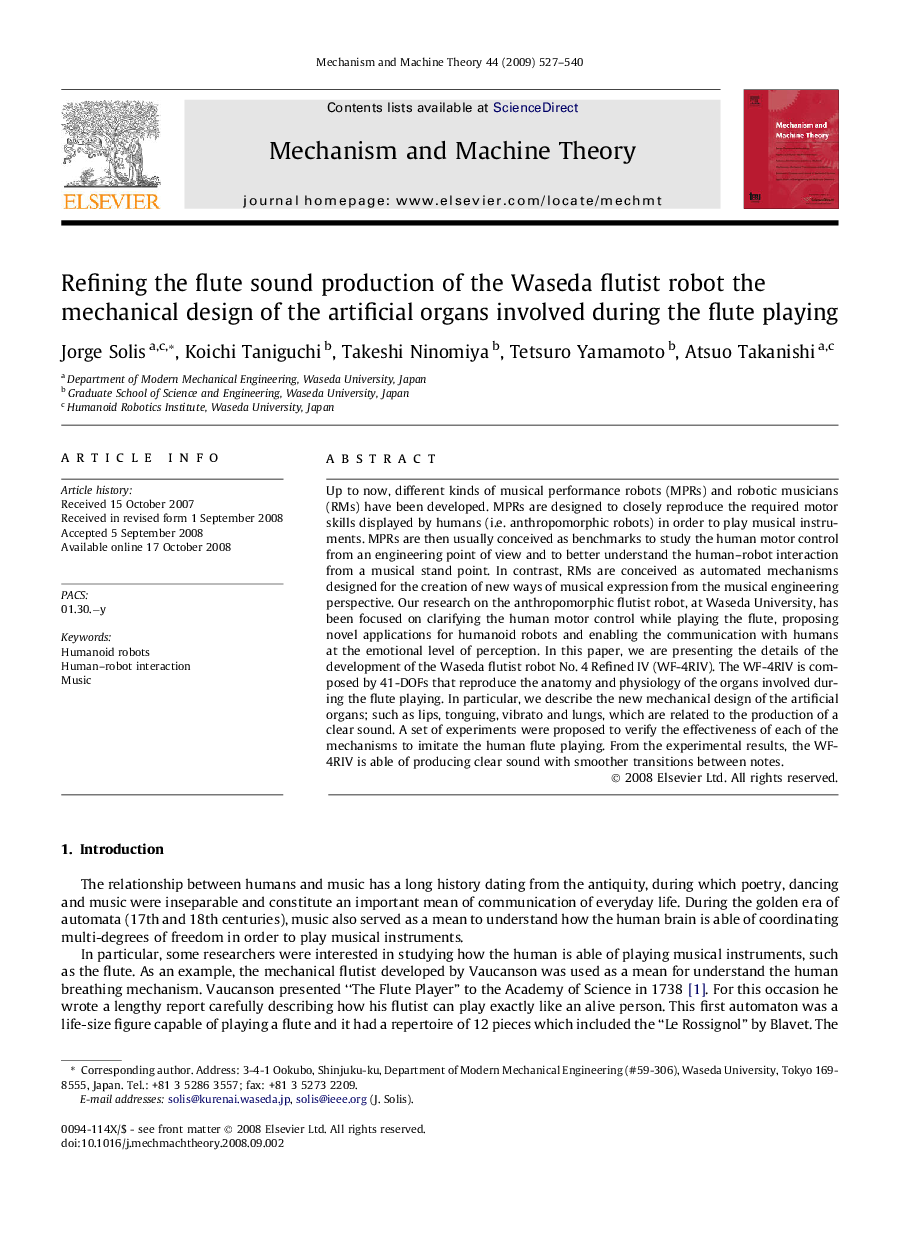| Article ID | Journal | Published Year | Pages | File Type |
|---|---|---|---|---|
| 799933 | Mechanism and Machine Theory | 2009 | 14 Pages |
Up to now, different kinds of musical performance robots (MPRs) and robotic musicians (RMs) have been developed. MPRs are designed to closely reproduce the required motor skills displayed by humans (i.e. anthropomorphic robots) in order to play musical instruments. MPRs are then usually conceived as benchmarks to study the human motor control from an engineering point of view and to better understand the human–robot interaction from a musical stand point. In contrast, RMs are conceived as automated mechanisms designed for the creation of new ways of musical expression from the musical engineering perspective. Our research on the anthropomorphic flutist robot, at Waseda University, has been focused on clarifying the human motor control while playing the flute, proposing novel applications for humanoid robots and enabling the communication with humans at the emotional level of perception. In this paper, we are presenting the details of the development of the Waseda flutist robot No. 4 Refined IV (WF-4RIV). The WF-4RIV is composed by 41-DOFs that reproduce the anatomy and physiology of the organs involved during the flute playing. In particular, we describe the new mechanical design of the artificial organs; such as lips, tonguing, vibrato and lungs, which are related to the production of a clear sound. A set of experiments were proposed to verify the effectiveness of each of the mechanisms to imitate the human flute playing. From the experimental results, the WF-4RIV is able of producing clear sound with smoother transitions between notes.
